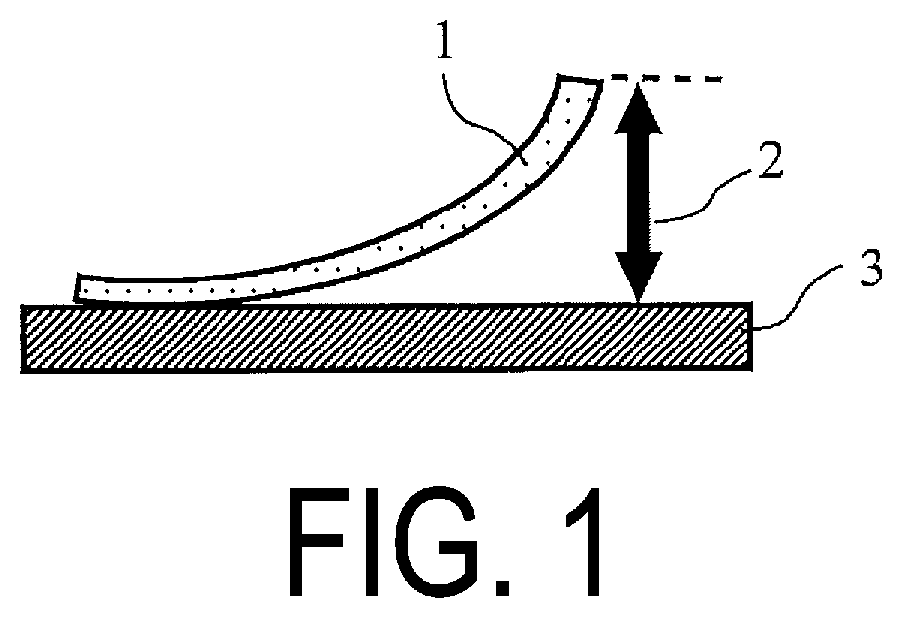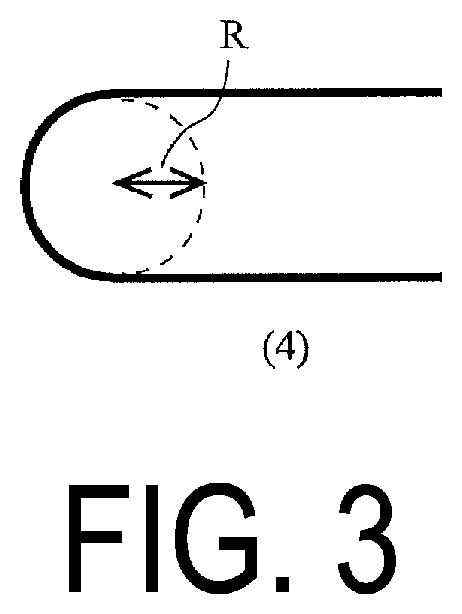Laminated body and flexible device provided with said laminated body
a flexible device and laminated body technology, applied in the direction of film/foil adhesives, synthetic resin layered products, protective garments, etc., can solve the problem of glass plates lacking flexibility, and achieve the effects of excellent flexibility, excellent curling resistance, and excellent bending resistan
- Summary
- Abstract
- Description
- Claims
- Application Information
AI Technical Summary
Benefits of technology
Problems solved by technology
Method used
Image
Examples
example 1
Preparation of Adhesive Agent
[0180]Each component was mixed in accordance with the formulation described in Table 1 (unit: part by weight) to obtain an adhesive agent. The viscosity of the obtained adhesive agent at 25° C. and the shear rate of 100 (1 / s) was measured by using an E-type viscometer (trade name “Viscometer TV-25”, available from Toki Sangyo Co., Ltd.). The viscosity was 22.6 mPa·s.
examples of 2 to 30
and Comparative Examples 1 to 3
Preparation of Adhesive Agent
[0181]Each adhesive agent was obtained in the same manner as in Example 1 except for changing the formulation to the ones shown in Table 1 (unit: part by weight).
Evaluation of Adhesion
[0182]The adhesive agent obtained in each of Examples and Comparative Examples was applied on a glass plate (trade name “S9112”, available from Matsunami Glass Ind., Ltd.) (coating thickness: 5 μm) and irradiated with light of 365 nm by using an LED irradiator as a light source in the air atmosphere to obtain a cured product / glass plate laminated body.
[0183]The obtained laminates were subjected to adhesion test (cross-cut test; based on JIS K 5600-5-6 (ISO 2409)), and the adhesion was evaluated by 6-grade classification test.
Curling Resistance Evaluation (1)
[0184]The adhesive agent obtained in each of Examples and Comparative Examples was applied to a PET film (size: length×width=1 cm×7 cm; thickness: 100 μm) as a resin film (coating thickness...
example 31
Preparation of Laminated Body
[0217]The adhesive agent obtained in Example 8 was coated on a triacetylcellulose film (TAC; size: length×width=1 cm×7 cm; thickness: 60 μm) in a manner that the thickness after being dried becomes 15 μm, was adhered onto a glass plate (trade name “G-leaf”, available from Nippon Electric Glass Co., Ltd.; thickness: 50 μm), and then was irradiated with light of 365 nm in the air atmosphere by using an LED irradiator (irradiation dose: 2000 mJ / cm2) to obtain a TAC / adhesive layer / G-leaf laminated body. The pencil hardness of the G-leaf surface of the obtained laminated body was measured by a method in accordance with JIS K5600-5-4 (ISO / DIN15184), and the pencil hardness was 9 H.
PUM
| Property | Measurement | Unit |
|---|---|---|
| thickness | aaaaa | aaaaa |
| storage modulus | aaaaa | aaaaa |
| glass transition temperature | aaaaa | aaaaa |
Abstract
Description
Claims
Application Information
 Login to View More
Login to View More - R&D
- Intellectual Property
- Life Sciences
- Materials
- Tech Scout
- Unparalleled Data Quality
- Higher Quality Content
- 60% Fewer Hallucinations
Browse by: Latest US Patents, China's latest patents, Technical Efficacy Thesaurus, Application Domain, Technology Topic, Popular Technical Reports.
© 2025 PatSnap. All rights reserved.Legal|Privacy policy|Modern Slavery Act Transparency Statement|Sitemap|About US| Contact US: help@patsnap.com



